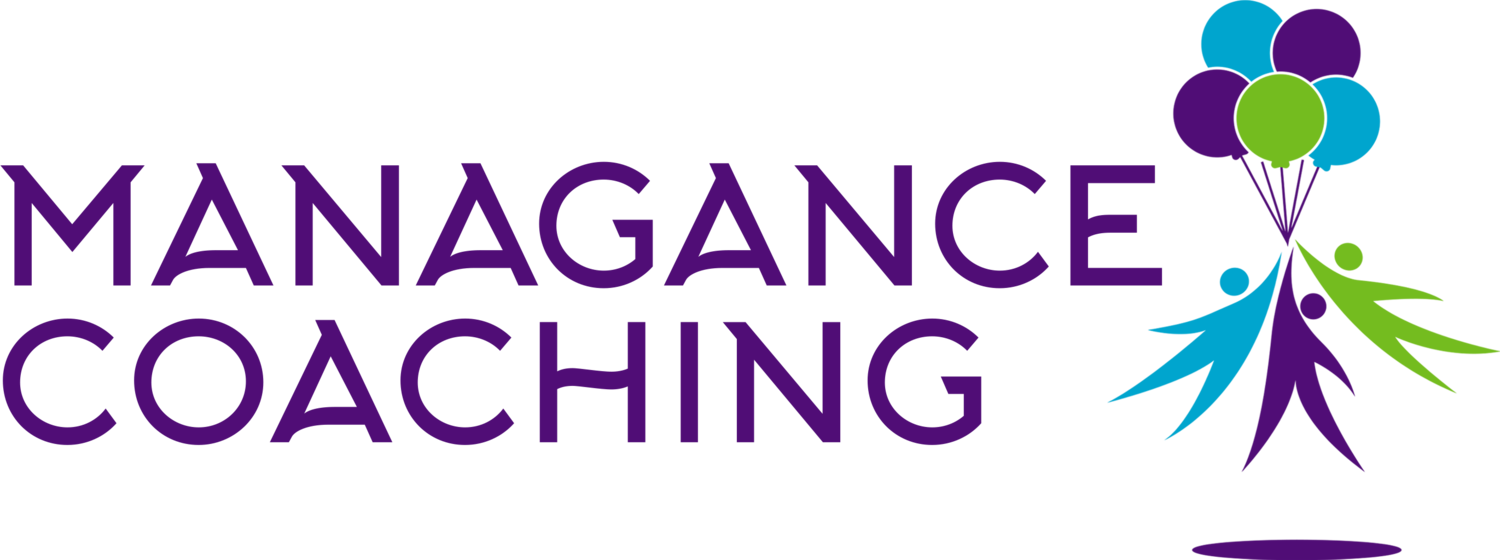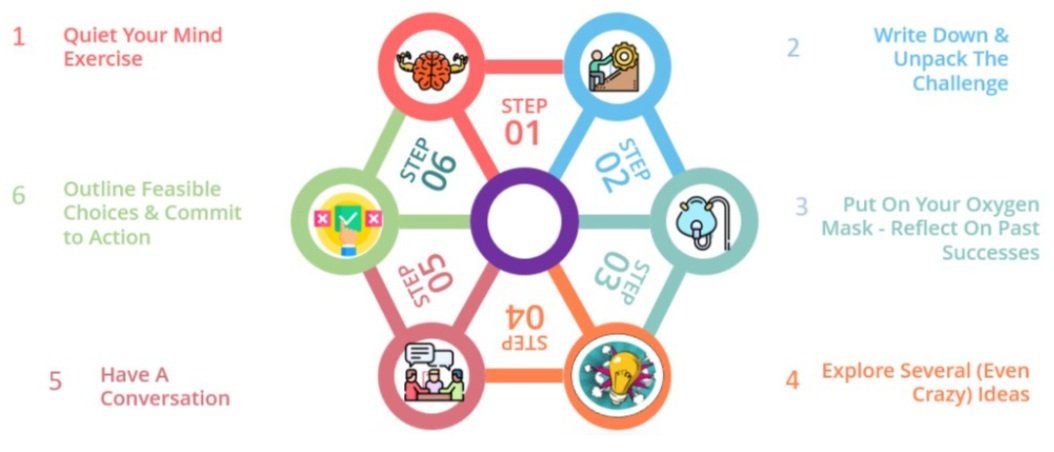How to Turn Any Obstacles Into Opportunities In 6 Steps
In this edition of my newsletter, I am sharing with you how leaders’ negative emotions adversely affect them and their teams and how they can effectively pivot to a more positive impact with a calm mind, expanded perspective, and ideas that offer choices. I am grateful to my colleagues @Ruby Brown, @Nathan Charles, and @Jack Wilson, three accomplished and inspiring leaders and leadership coaches who contributed to this article.
The teacher assigned a task to her students: write an essay about their future aspirations. However, when one student submitted an essay about owning a ranch filled with beloved animals, he received an F grade. Baffled, he asked the teacher why he got such a low grade. She dismissed his essay as unrealistic and instructed him to rewrite it for a better mark.
Back home, the little boy tearfully recounted the incident to his father. His father offered him two options: either stick to his dream and accept the F or surrender his dream to the teacher in exchange for a better grade.
The following day at school, the young boy courageously declared that he wanted to keep his dream, even if it meant receiving an F. Several years later, the same teacher led a group of students on a field trip to a nearby ranch, which happened to be owned by that same former student.
Fortunately, this student’s dad was a wise coach, giving his son options and letting him choose. The teacher would have been a more supportive leader and better coach if she told the student, “What I like about your essay is your big dream. Getting there will be hard work, but every success starts with an idea!”
This scenario raises a larger question: Why do some leaders, particularly in roles like Chief Financial Officers (CFOs), become so fixated on results that they neglect the importance of building relationships? Why are some executive directors driven by believing they can do everything better themselves? Why do program directors sometimes undermine their teams with negative judgments, and why do volunteer board members demand better communication without setting an example?
Negative emotions often unconsciously drive many leaders, leading to a climate where only 43 percent of team members feel safe asking for help, sharing suggestions, or challenging established practices without fearing negative consequences. Since teams with a positive climate tend to innovate quickly, benefit from diversity, and adapt well to change, there is work to do!
The leader's mindset is the critical difference in teams with a positive climate. Interestingly, most successful leaders have many examples of overcoming their fears, anxieties, and negative emotions on their journey to success.
When Ruby Brown’s supervisor encouraged her to apply for a public agency CEO position, Ruby hesitated because of her junior status on the team. When her supervisor wouldn't accept her reluctance and pushed her outside her comfort zone, Ruby applied and got the job.
A mentor at the university cultivated Nathan Charles’ vision for higher education, even though it meant venturing into uncharted territory. Nathan was the first in his family to go college and pursue a Ph.D., which meant spending a lot of money and leaving his home country.
Jack Wilson challenged the CEO's order to fire a staff member in the first week of his first role as Vice President of Human Resources. Jack decided to evaluate the employee's performance instead. Later, the same CEO promoted the individual he was supposed to terminate to be Jack's successor.
A meeting I had planned for several months yielded the desired result, but everyone left feeling angry and uncomfortable with their decision. Following reflections, an apology, and an offer to revisit the topic, the Board implemented the approved plan with continuing positive outcomes.
When they face a challenge, leaders commonly default first to the BAD parts of the situation.
While being concerned or skeptical isn't inherently wrong, it becomes problematic when leaders get stuck in negativity. Negative emotions tend to push individuals to analyze their way out of challenges, which doesn't work effectively in most cases. Successful problem-solving demands creativity, cooperation, and a positive mindset.
As Andy Stanley, an American Clergyman, points out, leadership is about guiding people on a journey to places the leaders themselves may have never experienced. Leaders often lead toward results they haven't encountered, so it is crucial to develop the positive mindset required to turn obstacles into opportunities.
Here are six proven interconnected steps to grow a positive mindset and turn obstacles into opportunities:
Step 1: Do a 2-minute quiet your mind exercise.
Do not make excuses about not having the time to do this. You do, just do it!
One easy way in the office is to sit in a chair with your back straight and relaxed and your feet flat on the floor. If it feels helpful, set the timer on your cell phone for 2 minutes.
Close your eyes. Continue to breathe easily through your nose. Now, bring all your focused attention to the farthest thing you can hear and really listen to it, noticing its intensity, highs, and lows. After 30 seconds, shift your focus to the closest thing you can hear, such as your breathing. When your mind wanders - and it will - bring it gently back to the sound that has your focus. After 2 minutes, open your eyes.
While it may seem like an odd practice initially, calming your mind briefly helps you access your brain’s sage wisdom that is restricted when we feel negative emotions.
Forming mind-quieting habits is a chance to give your brain some love and improve its functioning.
Return to step one whenever you feel a surge of negative emotion. For variety, click here for a video of me guiding listeners through a different mind-quieting exercise.
Step 2: Write down what is challenging you and why it is a challenge.
Spend two to five minutes describing your challenge on paper and explaining why it is a problem. This process engages all parts of your brain and creates more thinking space.
Again, do not make excuses about not having the time to do this. You do, and it will be worth it!
Step 3: Put on your oxygen mask by remembering factors that supported past success.
Reflect on a time when you successfully navigated another challenge and jot down the factors that contributed to your success. Was it patience, someone you trusted to talk to, getting more information, etc.?
Connecting to past accomplishments is a way of “putting the oxygen mask on yourself” to remind you that you’ve got this. You are capable of finding solutions!
Step 4: Explore several (even crazy) ideas.
Return to the challenge you described in Step 2. Expand on your description, briefly unpacking the story behind it. Consider the facts, the people involved, and the potential impact of not resolving it. With that context, begin to imagine a small step or possible option to help you address some of the story.
Do not worry about fixing everything at once unless it is a relatively simple situation you can clear quickly.
Since you are not making any decisions yet, push yourself 10% past your discomfort to consider what else might be possible.
For example, you might change an element in a story, type into Google “shocking statistics about x,” or ask ChatGPT for some recommendations to get some new sparks. You are only beginning to imagine some possibilities.
Step 5: Have a conversation.
With a few ideas in mind, now is an excellent time to find a trusted friend, co-worker, or colleague to share your initial thinking and invite their ideas.
Go into this conversation with an open mind, committing to accept that their ideas are at least 10% right. Ask yourself what one thing you like about their suggestions.
Voila! You have already turned the original obstacles into various potentially actionable opportunities.
Step 6: Outline feasible choices and commit to action.
Now, you are ready to dig deeper into each option, considering which is the best fit for your purpose. Then decide on 1 to 3 sharply focused actions you feel motivated to take. These small steps pave the way to resolving the original obstacles.
In today’s tumultuous world, it’s common to resist the notion that every circumstance can be turned into an opportunity. However, it's not the situation but your response to it that can be transformed. Leaders will face many challenges beyond their control, but they can always influence their choices in response to these circumstances.
Ultimately, the choices leaders make are their opportunities. By developing mental fitness and a positive mindset, they can navigate challenges and turn them into stepping stones toward success.
_ _ _ _ _ _ _ _ _ _ _ _ _ _ _ _ _ _ _ _ _ _ _ _ _ _ _ _ _ _ _ _ _ _
If you have a persistent or complex challenge you need help shifting into an opportunity, there are 3 ways I can help you:
Register here for our 75-minute free Positive Intelligence (PQ) Saboteur Assessment Debrief Seminar. Participants raise awareness about the impact of negative emotions at work and in life and learn 3 of the many tools we use to help leaders effectively navigate negative emotions when they happen (and they always will) to have more positive influence and impact. When you register, participants receive a link to complete the Saboteur Assessment before the debrief.
Register here for our 4-week free Raising The Bar Seminar. (2024 Seminar Dates: 1) Jan 9-30; 2) Feb 13-Mar 5; 3) Mar 19-Apr 9 or 4) Apr 23-May 21) The Seminar introduces senior-level leaders to proven methods and tools for building their mental fitness - the capacity to approach every circumstance with a positive and productive mindset. Our approach supports participants in developing a more inclusive leadership style to influence team and organizational cultures positively. In weeks 1-3, we introduce Positive Intelligence (PQ) Operating System elements and apply them to participant situations. In week 4, we conclude with a forward-looking leadership journey exercise and review a menu of ways we can continue working together.
Book here for a 40-minute free Discovery Conversation with me to explore your challenge and see together how we can co-create an opening that moves you forward. No challenge is too big or too small. Sometimes the smallest step is the biggest opportunity.

